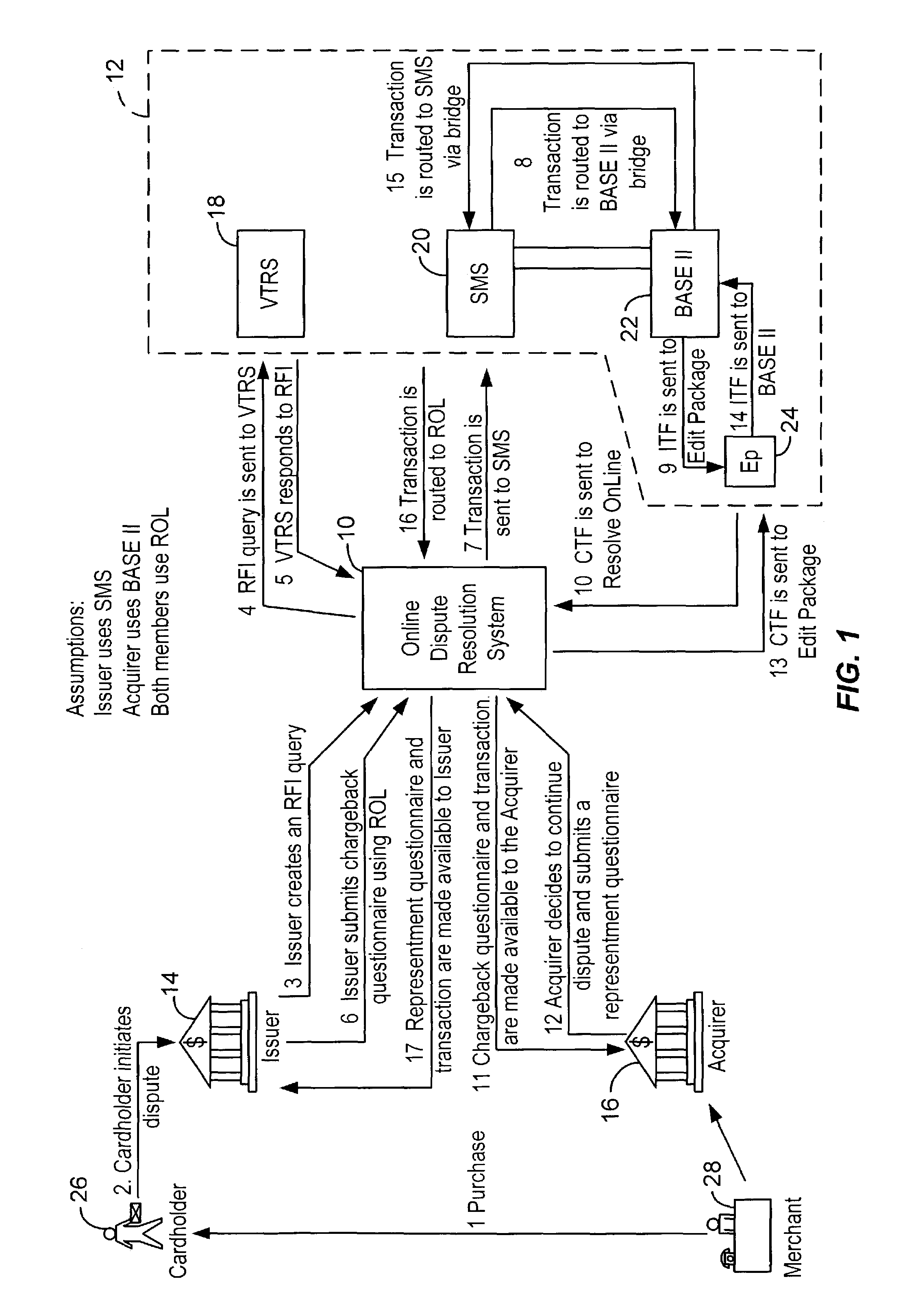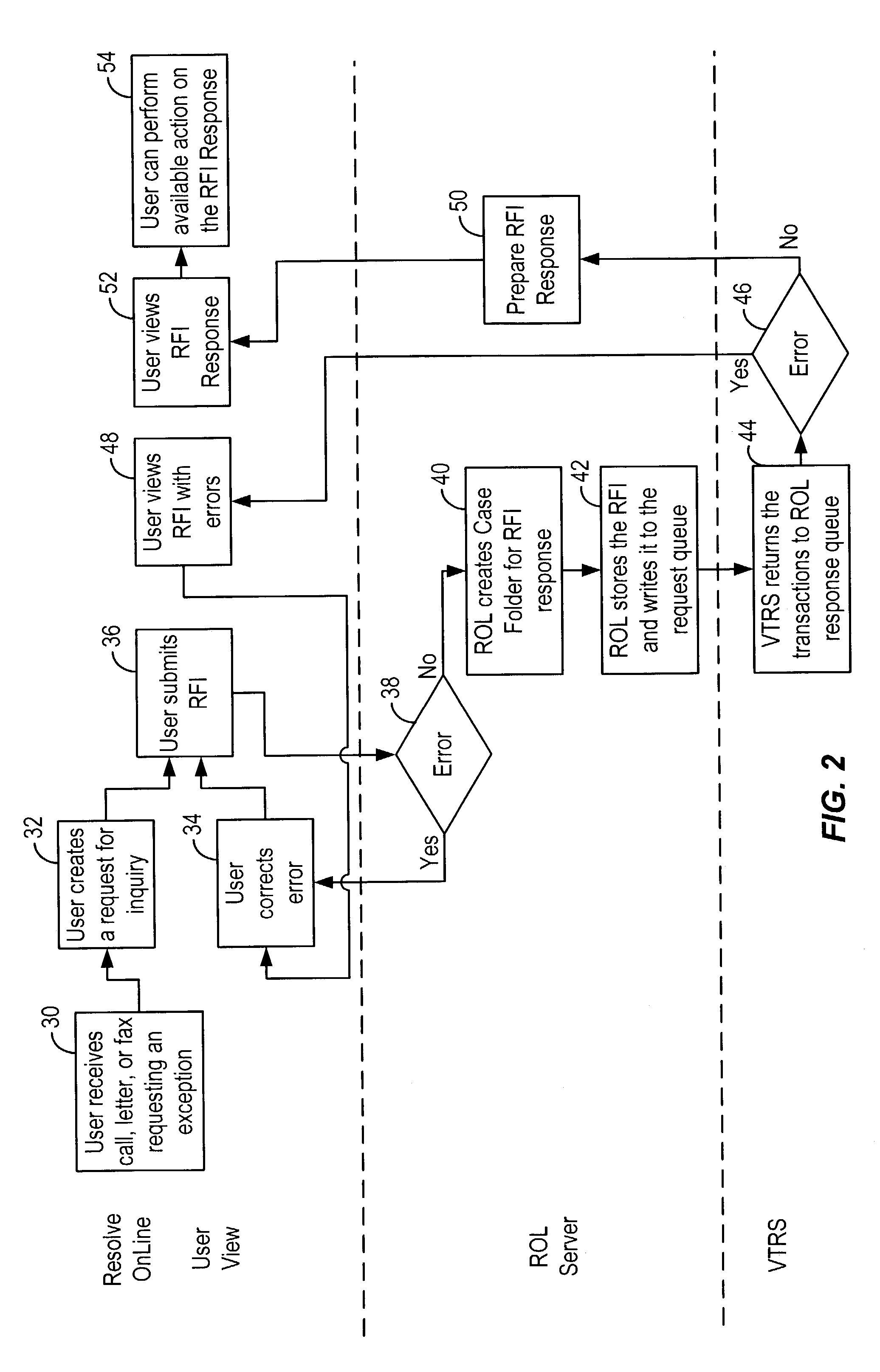Method and system for facilitating electronic dispute resolution
a technology of electronic dispute resolution and electronic payment, applied in payment protocols, instruments, marketing, etc., can solve the problems of reduced chargebacks, no comparable effort is invested in the clerical and procedural aspects of dispute processing, and a more complex system that is difficult to learn
- Summary
- Abstract
- Description
- Claims
- Application Information
AI Technical Summary
Benefits of technology
Problems solved by technology
Method used
Image
Examples
Embodiment Construction
[0021]The present invention in the form of one or more exemplary embodiments will now be described. FIG. 1 is a simplified schematic diagram illustrating how an exemplary embodiment of the present invention is used in connection with other systems to resolve credit card dispute. Referring to FIG. 1, in this exemplary configuration, an online dispute resolution system 10 of the present invention interacts with a number of other systems including one or more user systems and a back-end system 12. The user system permits a user or service subscriber to access the online dispute resolution system 10 and use various types of services offered by the online dispute resolution system 10 to resolve a credit card dispute. Typically, users include issuers and acquirers. The user systems include, for example, an issuer system 14 and an acquirer system 16.
[0022]Optionally, users may include cardholders 26 and merchants 28. In an alternative exemplary embodiment, users such as cardholders 26 and ...
PUM
 Login to View More
Login to View More Abstract
Description
Claims
Application Information
 Login to View More
Login to View More - R&D
- Intellectual Property
- Life Sciences
- Materials
- Tech Scout
- Unparalleled Data Quality
- Higher Quality Content
- 60% Fewer Hallucinations
Browse by: Latest US Patents, China's latest patents, Technical Efficacy Thesaurus, Application Domain, Technology Topic, Popular Technical Reports.
© 2025 PatSnap. All rights reserved.Legal|Privacy policy|Modern Slavery Act Transparency Statement|Sitemap|About US| Contact US: help@patsnap.com



